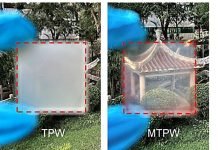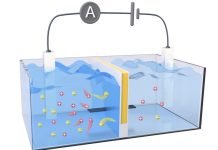
Ever wondered how animals like cats can see so well in the dark? Their secret lies in a special layer behind their retinas called the tapetum lucidum.
This layer acts like a mirror, giving light a second chance to hit the retina, allowing animals to see better in dim light. But did you know that a similar principle exists for sound waves too?
Optical scientists have something called photonic crystals, which are materials that control the flow of light. These crystals work by blocking certain frequencies of light, much like how a sieve filters out certain sizes of particles.
And just like how the reflective markers on highways glow in the dark, photonic crystals manipulate light using layers of thin films and special fabrication techniques.
But it’s not just light that can be controlled this way. Enter function phononic crystals. Just as photonic crystals control light, phononic crystals control sound. They’re like a finely tuned filter for sound waves, allowing engineers to manipulate how sound moves through materials.
A team led by David Röhlig at Technische Universität Chemnitz in Germany is taking this idea one step further. They’re proposing to create function phononic crystals with smooth, continuous changes in properties, rather than the typical sharp variations.
This means that instead of sound encountering sudden changes as it moves through a material, it would experience a more gradual transition.
Through computer simulations, Röhlig’s team found that even small deviations from the usual sharp changes could lead to significant improvements.
These improvements include larger gaps in the range of frequencies that sound can’t pass through, as well as multiple gaps appearing in unexpected places.
This discovery opens up a whole new world of possibilities. By fine-tuning the properties of materials, engineers could create better soundproofing, more efficient transducers, and even new devices in fields like materials science and engineering.
Röhlig is excited about the potential applications of this research. He envisions using these new materials to design better acousto-mechanical devices, like speakers and actuators.
And it’s not just small-scale applications; Röhlig suggests that even large-scale environments could benefit from this technology. Imagine arranging trees or building units in a way that enhances soundproofing naturally.
As Röhlig puts it, “Our findings offer a fresh perspective on phononic structures, opening up new avenues for innovation in various fields.”
With further research and experimentation, these function phononic crystals could revolutionize how we interact with sound in our everyday lives.
The research findings can be found in Europhysics Letters.
Copyright © 2024 Knowridge Science Report. All rights reserved.




